Do speed cushions slow down emergency vehicles?
Like speed bumps, speed humps, and speed tables, speed cushions are also installed in various locations to manage and slow down traffic.
Speed cushions’ role is similar to that of other traffic management tools. But they are different from many of them concerning their structure. They have gaps between them, allowing emergency vehicles to move over them without slowing down. It makes them an emergency vehicle-friendly tool.
Speed cushions should be used in areas where speeding vehicles are causing trouble and disturbance for pedestrians. This tool comes in different dimensions and materials. People should consider its construction material and dimensions according to the needs of its place of installation.
Do you want to know more about this topic? We also have an article talking about the role of speed cushions.
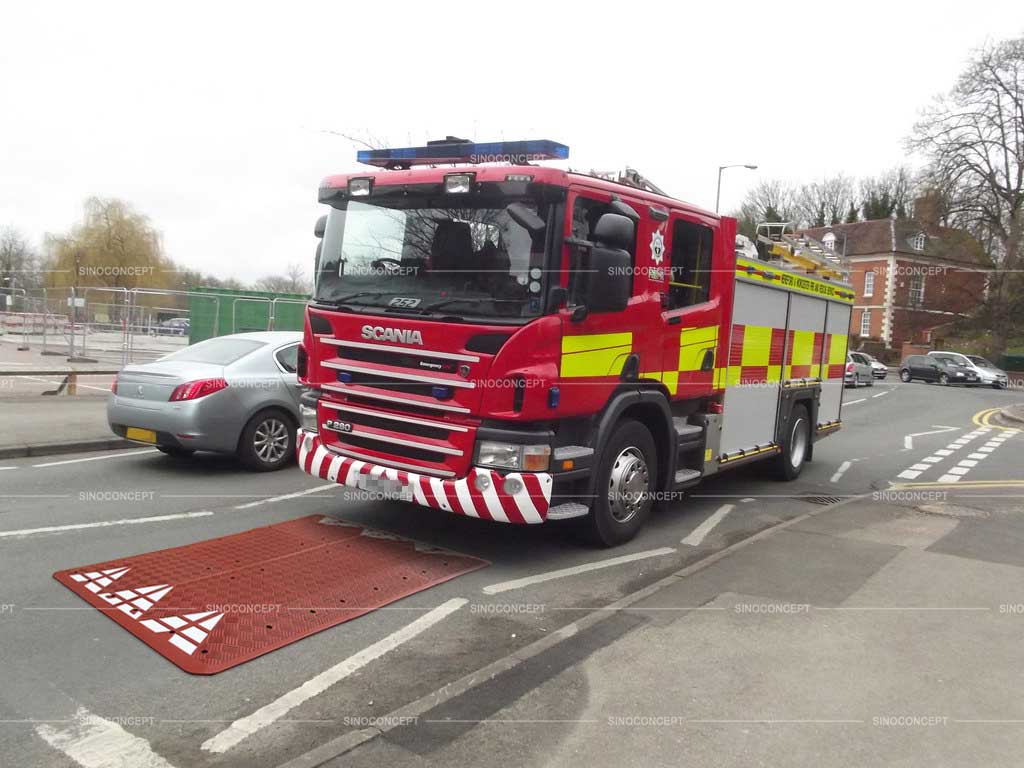
Traffic calming measures and their importance
Traffic calming measures are taken to protect cyclists, bicyclists, motorists, and pedestrians from the unsafe behaviour of speeding drivers.
To implement these measures, the transportation department, municipalities, federal highway administration and committees use different kinds of traffic safety or traffic control devices.
Transportation engineers design these measures according to the basic needs of an area. They use standard traffic-engineering techniques to find ways of controlling traffic volume and reducing collisions and crashes between vehicles in the best way possible.
The following are a few examples of traffic management and traffic-control measures and tools:
- Median islands
- Chicanes
- Traffic circles
- Extension of curb
- Tight corner curbs
- Mini roundabout
- Raised intersection
- Cut-through
- Speed cushion
- Speed table
- Speed bump
- Speed hump
- Traffic circle
- Rumble strips
Road traffic safety measures have been used in Europe for several decades. A standard protocol is followed in every country to install these tools.
If you believe your neighbourhood is getting unsafe for pedestrians, using different measures can help you sort out this issue.
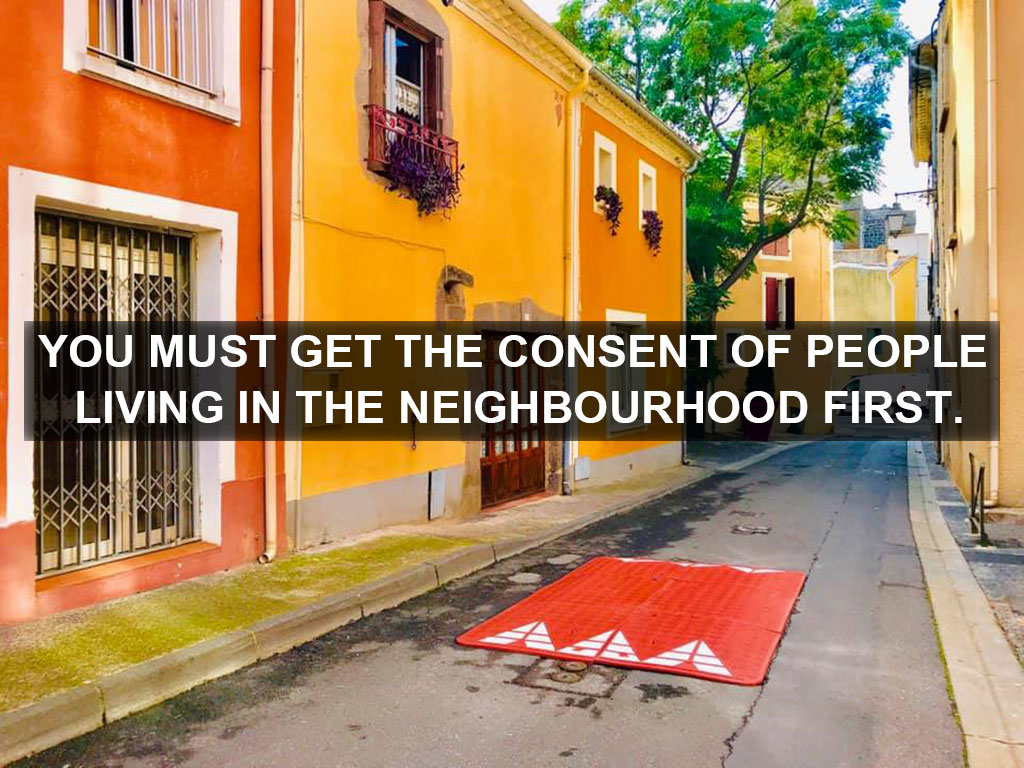
Speed cushions
Speed cushions are one of the traffic calming tools that are available in different sizes and forms. They can be permanent or temporary.
The permanent speed cushions are manufactured of concrete and asphalt. They are denser and more solid than temporary speed cushions made of recycled rubber.
Permanent speed cushions cannot be removed once they have been installed; they can only be broken and then removed.
On the other hand, temporary speed cushions can be installed and replaced in a few minutes with the help of a few tools such as screws, drills, etc.
Speed cushions are spread across the road in such a way that they create a pad that is smaller in width than the width of the road.
Two or three such pads are installed on one roadway. People can locate speed cushions in their surroundings, such as parking lots, school zones, residential areas, and pedestrian zones.
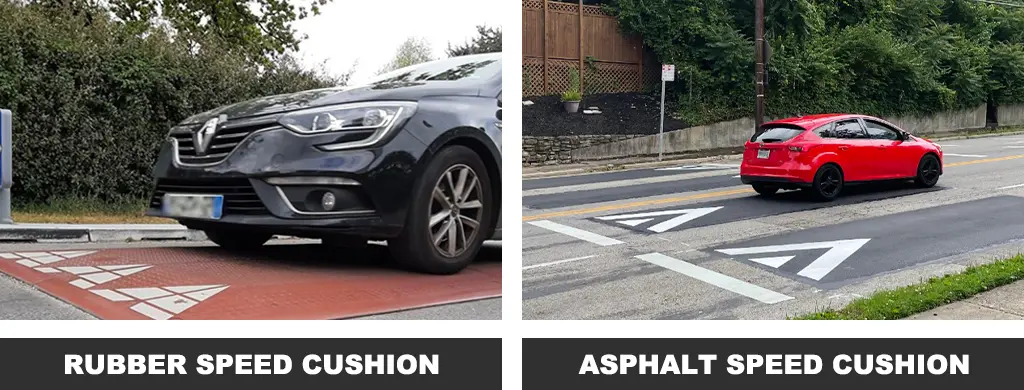
The differences between speed cushions, speed bumps and speed humps
Speed humps, speed bumps, and speed cushions are the most popular speed control devices on city streets and roads. People often confuse them because of their similar functions. But, in reality, these tools differ from each other in different ways.
You have already read a good part of this article, 👀
We've
got the impression that you like it. 🙂
👇🏻
IF YOU ARE LOOKING TO WORK DIRECTLY WITH A MANUFACTURER,
FEEL FREE TO CONTACT US. WE ARE VERY HAPPY TO HELP!
Speed humps
They have a raised surface that spreads across the entire width of a road. They slow down all sorts of vehicles, such as ambulances, fire trucks, buses, cyclists, motorists, and cars. They can reduce speeding vehicles to 20 miles per hour (mph) speed.
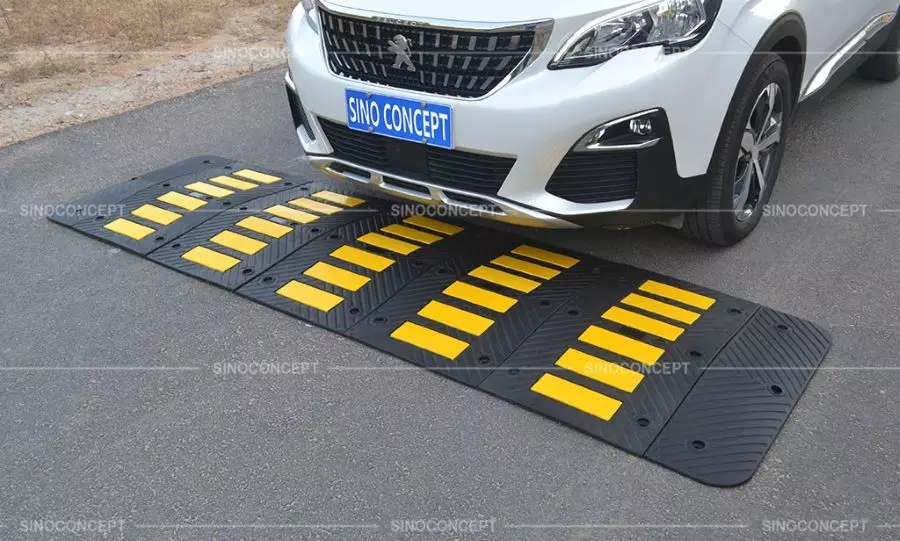
Speed bumps
They are similar in structure to speed humps, but they are narrower in width comparatively, which is considered more aggressive. They generally slow down traffic to up to 10 miles per hour speed.
They are installed in several places, such as around crosswalks, pedestrian crossings, stop signs, traffic signals, speed signs, variable message signs, and unmarked crosswalks.

Speed cushions
They are not as long as speed bumps and speed cushions. They are also not spread over the entire road width. Two or more speed cushion pads are used on the road. These pads have a square to rectangular shape.
Each speed cushion pad is placed at a certain distance from the other. This way, a vehicle with long axles, including an emergency vehicle or transportation bus, passes over these structures through their gaps without slowing down like a passenger car.
The distance between speed cushion pads allows stormwater and other liquid substances to move and reach the drainage. Speed humps and speed bumps only allow the movement of water at the two ends, which can form a water puddle.
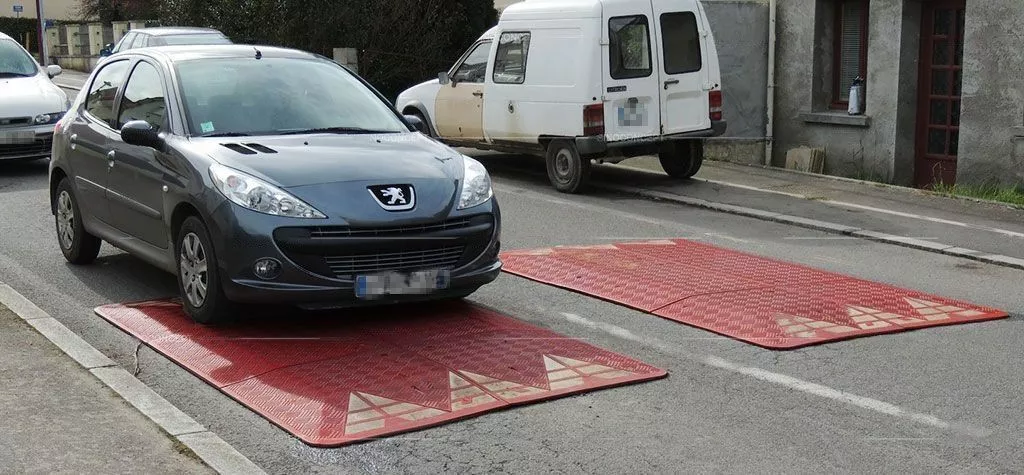
Suitable locations for speed cushions
Different factors are considered when deciding the location of a speed cushion. If they are not installed correctly, they can fail to achieve speed reduction goals and even lead to more accidents. Since speed cushions impose a speed limit, they are used in areas where pedestrian safety is at risk.
Below is the list of suitable locations for speed cushions and other speed control tools:
- Speed cushions are used around pavement markings, traffic signs, stop signs, traffic cones, orange cones, parking signs, speed limit signs, traffic lights, crossing signs, construction signs, railroad crossings, signage, traffic signals, and no-parking areas.
- Speed cushions are installed around school zones, work zones, and other heavy foot traffic locations.
- Speed cushions cannot be installed in front of private properties whose owners object to their installation. That is why getting people’s consent in the neighbourhood is necessary.
- They should not be placed in front of a drainage inlet or over a water valve.
- Separate speed cushions should be placed in separate traffic lanes to control traffic speed without any hazards.
- They should be placed in areas with proper lighting so that drivers can see them clearly at a short distance. Otherwise, they can be hazardous for cars moving at high acceleration.
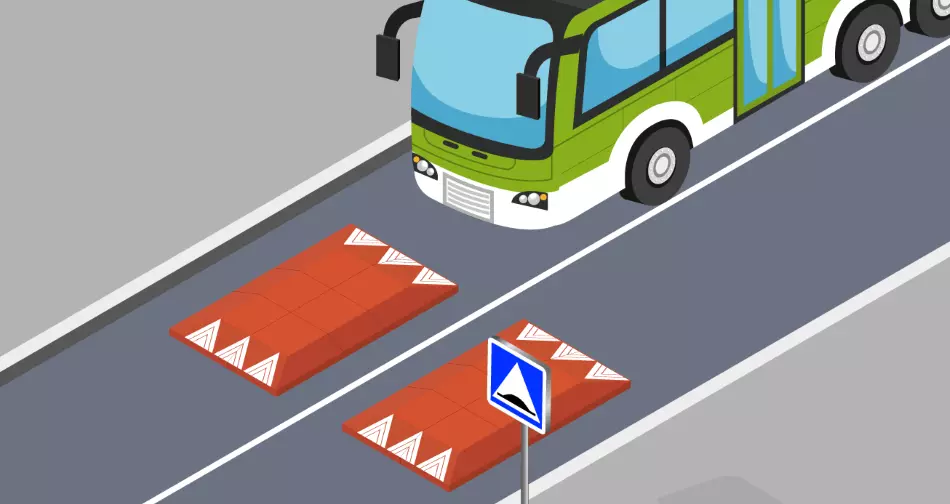
Speed cushions and emergency vehicles
Traffic calming tools are usually not placed by the municipality on roads and routes from which emergency vehicles often pass. It is because they can hinder them and force them to slow down, which can put the lives of people in emergencies at risk.
Speed cushions do not force a school bus or emergency vehicle to slow down, so they are considered emergency vehicle-friendly. However, transportation departments should still ask emergency response officials before installing speed cushions on their routes.
Rubber speed cushions have a protector and reflective material on their surfaces. Due to this, when flashing yellow lights of emergency vehicles and other vehicles fall on them, they become visible when they are within the visibility radar.
They also help police enforcement and ordinance enforcement even when police are not around them. That is why emergency response officials should consider them when planning traffic control measures.
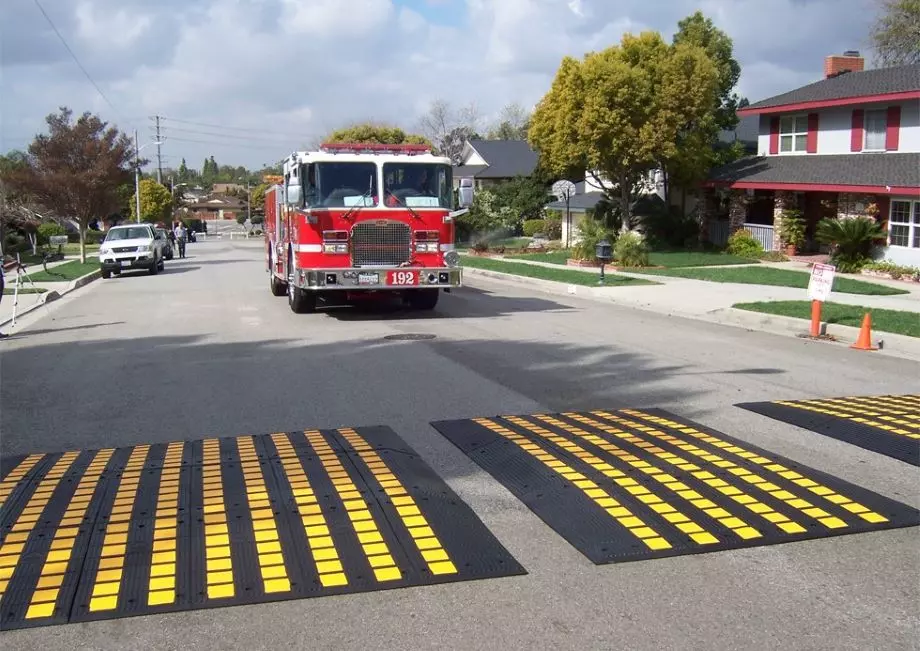
Conclusion
Traffic data suggests that speed cushions are very helpful in stopping cars from exceeding the speed limit in a slow-zone area. That is why they are placed around crossings, school zones, and work zones where people standing on foot can be hit by vehicles due to the negligence of vehicular drivers.
Rumble strips, road bumps in the road, signposts, traffic barriers, road signs, and pedestrian signs are all used to create safer roads and streets for pedestrians and motor vehicle drivers.
People should decrease their vehicular speed when moving over a speed control tool so that they can reduce the impact of such tools on their vehicles.
👇🏻
IF YOU ARE LOOKING TO WORK DIRECTLY WITH A MANUFACTURER,
FEEL FREE TO CONTACT US. WE ARE VERY HAPPY TO HELP!





















